Beijing, as the capital of China, has a long history and splendid culture. At the same time, it has beautiful mountains and rivers, numerous sceneries and beautiful seasons! How to tour Beijing? This may be the question most first-time tourists want to ask. In order to make it more convenient for tourists to visit Beijing, the author offers the series of “X-day tour in Beijing”.
I.The Great Wall
The Great Wall is an important geographical and cultural symbol of our country and the spiritual symbol of the Chinese nation. The Great Wall in Beijing was first built in the Northern Qi Dynasty and built in the Ming Dynasty on a large scale. From Pinggu in the east to Mentougou in the west, it passes through six districts of Pinggu, Miyun, Huairou, Changping, Yanqing and Mentougou in Beijing, with a total length of 573km. The architectural remains of the Great Wall of Ming Dynasty in Beijing are preserved in various forms, such as castle, pass, wall, enemy tower, beacon tower, horse retaining wall and barrier wall, among which Badaling Great Wall and Mutianyu Great Wall are national 5A scenic spots.

1.The excellent part of the Great Wall: the Badaling Great Wall
Badaling Great Wall, known as "one of the nine major gateways in the world", is an important part of the Great Wall, a great defense project in ancient China. It is a pass of the Great Wall of Ming Dynasty and an outpost of Juyongguan, an important pass of the Great Wall. In ancient times, it was said that "the danger of Juyong lies not in the pass but in Badaling". It was an important barrier for the capital of Beijing, and has always been a place for strategists to fight for. Badaling Great Wall is the best preserved and most representative of the Great Wall in the Ming Dynasty, so it is the earliest section of the Great Wall open to tourists. The Badaling Great Wall is the excellent part of Ming Great Wall. It is a combination of lofty, precipitous, beautiful and verdant, and well known with the slogan “A man who doesn't reach the Great Wall is not a hero”. It attracts tourists from all over the world.
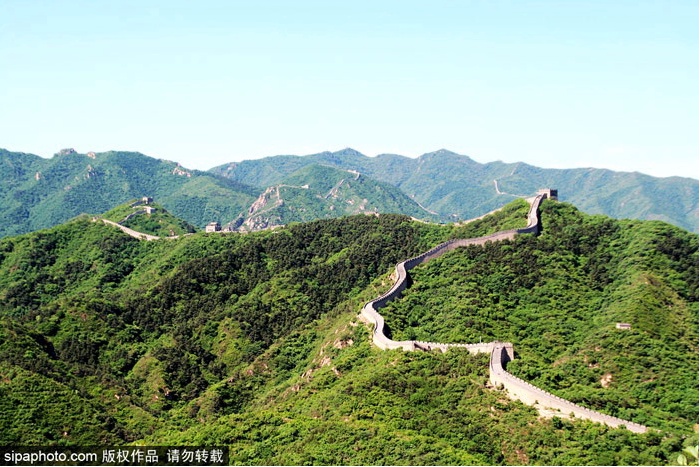
The overall structure of Badaling Great Wall is trapezoid, narrower in the East and wider in the west, with two East and West gates. The east gate is called "Juyong Waizhen", and the west gate is called "Beimen Suoshi". There are 12 "defense towers" in the section extending northward and 7 "defense towers" in the section extending southward. You can also climb to the Great Wall through south 4th tower, north 4th tower, north 8th tower, and north 11th tower. Among them, south 4th is the best place to view the Great Wall; the north 8th tower is the highest "defense tower", also known as "Guan Ri Tai". The north 8th tower is more than 1500 meters away from Guancheng. As the saying goes, "A man who doesn't reach the Great Wall is not a hero", that is to say, he can only be called a hero if he has to walk here. A cableway is also built between the south 4th tower and the north 8th tower. Tourists who do not want to walk can take the cableway to arrive directly, and then take the cableway to return after playing, which can save physical strength and play leisurely.
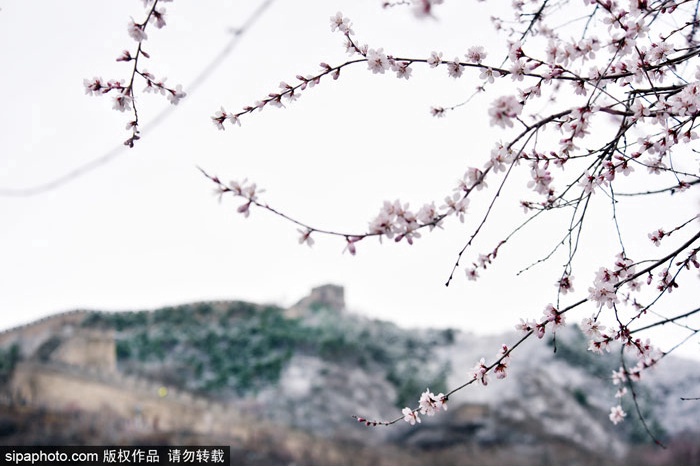
The best time to visit is from March to May and from September to November every year. Spring is the most comfortable season in Beijing, and the mountains are full of flowers. Red maple leaves can be seen all over the mountain in autumn. The climate conditions in winter and summer are slightly worse than those in spring and autumn, but the Great Wall covered by snow in winter is more solemn and majestic.
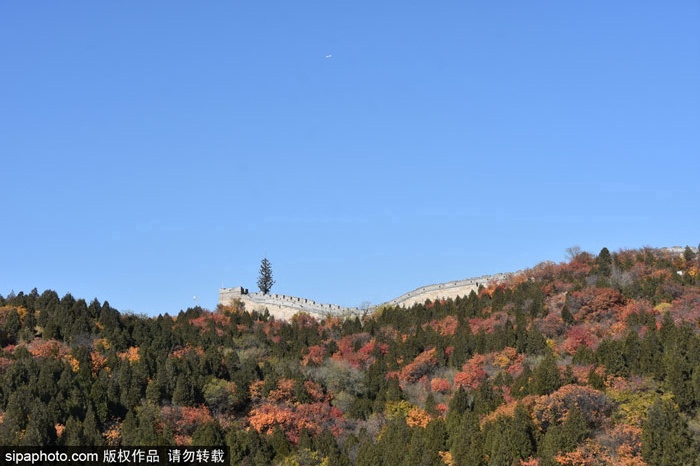
Address: North entrance of Guangou Ancient Road, Jundu Mountain, Yanqing District
Transportation: take Metro Line 8 or line 13, get off at Huoying station; transfer to line S2 at huangtudian station, and get off at Badaling station.
Opening hours: from 9:00-16:00 every day since Tuesday, March 24, 2020.
Areas of opening: at present, only north 6th tower to the south 5th and half tower of Badaling Great Wall are open for sightseeing. Please tour following the designated route. Other areas of Badaling Great Wall, as well as the Shuiguan Great Wall, the Ancient Great Wall and the Great Wall Museum of China are temporarily closed.
Ticket price: 40 yuan/person in peak season; 35 yuan/person in off season.
Ticket purchase: since March 23, 2020, visitors can sign up for the real name system and book tickets
through the WeChat official account of “Badaling Great Wall”, the official website or the official online ticketing system. In order to ensure the health and safety of tourists, the scenic area will carry out flow control according to 30% of the optimum capacity (65000 persons), and make appointments of visiting during two periods, including 9:00-12:30 and 12:30-16:00 every day.
Tel: 010-69122222.
2.The Mutianyu Great Wall
In addition to the Badaling Great Wall, the equally famous Mutianyu Great Wall is also very beautiful.
Mutianyu Great Wall has the lowest terrain, only 486 meters above sea level. As it goes eastward, the height rises abruptly. Within less than 500 meters to Dajiaolou (Muzi Yitai), the height rises 117 meters. Going west, it is relatively gentle, reaching the highest point, only passing through 10 enemy towers, with an elevation of 533 meters to 1039 meters from 486 meters. On both sides of the Great Wall of Mutianyu are crenels. To the east of Zhengguantai, there is a branch about 1000 meters long, known as "bald tail".
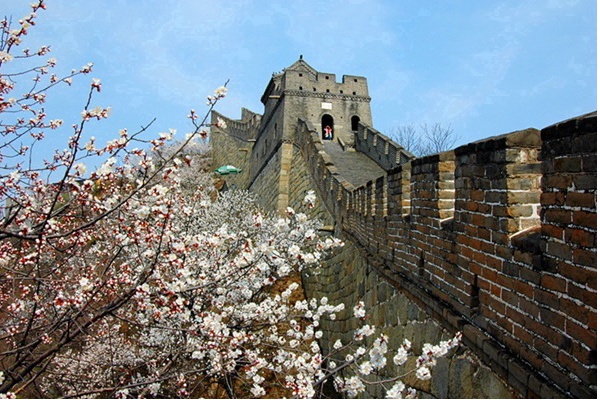
3.Water Great Wall
Huanghuacheng Great Wall is actually a military fortress composed of three checkpoints and four Great Walls, which is rare in the whole Great Wall series. There are three features of Huanghuacheng Water Great Wall. First, there is a fortress and water at the same time. Second, some parts of the Great Wall are immersed into the water, which is the origin of water Great wall. Third, there is an amazing garden of chestnuts in various forms.
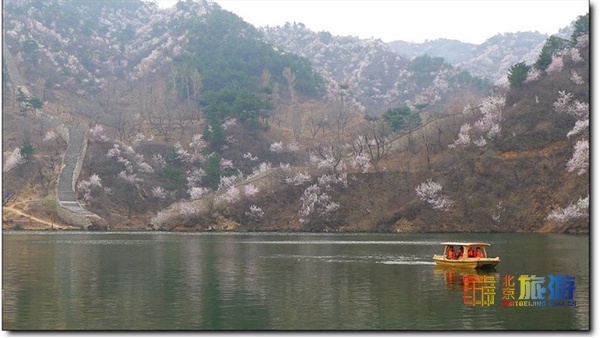
II.Olympic Park
You can go straight to the Olympic Park when you are back from the Great Wall.
Beijing Olympic Park is located in Chaoyang District, Beijing. It is located at the north end of the central axis of Beijing. The north end is the South Bank of Qinghe River; the south end is Beitucheng Road; the east end is Anli road and Beichen East Road; the west end is lincui road and Beichen West Road. It is a national 5A scenic spot.
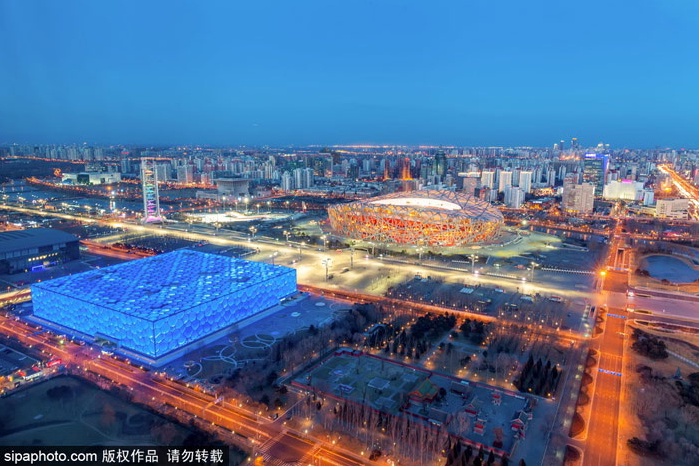
The Olympic Park covers a total area of 11.59 square kilometers, divided into three areas. In the north is the forest park, covering an area of 6.8 square kilometers. In the middle is the venue and supporting facilities, covering an area of 3.15 square kilometers. In the south is the built venue area and reserved land, covering an area of 1.64 square kilometers. The Olympic Park is an extension of the central axis, implying the continuity of China's millennium history and culture, and embodies the three concepts of "science and technology, green, and humanity".
The Olympic Park presents a unique cultural landscape for audiences all over the world, including a dragon shaped river running through the north and south, a number o sculpture works, various well-designed flower patterns, unique lamp posts, etc. The sunken garden, located 9 meters underground, combines traditional Chinese elements with modern architecture to create a blend of ancient and modern artistic conception.
The top in of the Olympic Park: it is the largest artificial water system in Asia, the largest urban green landscape in Asia, the world's most open pedestrian square, the longest underground transportation hub in Asia, and the largest celebration square. In 2012, it was rated as a national 5A scenic spot.
The main attractions are as follows:
1.National Stadium "Bird's Nest"
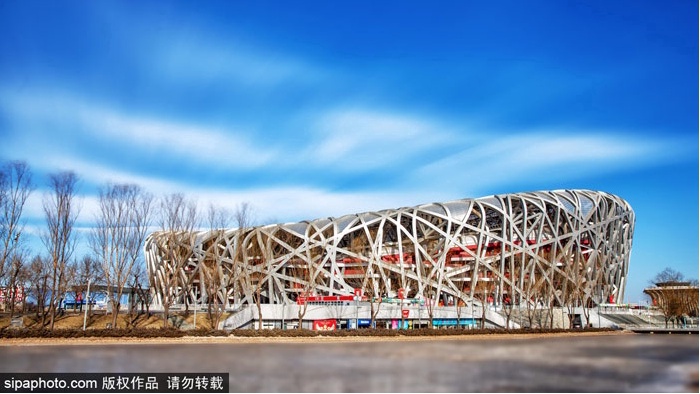
The majestic national stadium is one of the landmarks of the Beijing Olympic Games. It is located in the south of the Olympic Park and the east of the central axis. It is the main stadium of the 29th Olympic Games in 2008. It covers a total area of 21 hectares and a building area of 258000 square meters. There are about 91000 seats for the audience, including 11000 temporary seats. The opening and closing ceremonies of the 29th Olympic Games and the 13th Paralympic Games in 2008, as well as the finals of stadium games and football game are held here. After the Olympic Games, it has become a comprehensive large-scale place of culture and sports, fitness shopping, catering and entertainment and tourism exhibition, and become a landmark sports building and Olympic heritage.
The national stadium has the nickname "bird's nest" because its structure is like a bird’s nest. The chief designer is from Switzerland, a group led by Jacques Herzog and Pierre de Meuron. Its masterpieces in recent years are the Tate Modern Museum in London in 2002 and the main venue of the world cup in Germany in 2006.
Tel: 84372992
2.National Swimming Center (Water Cube)
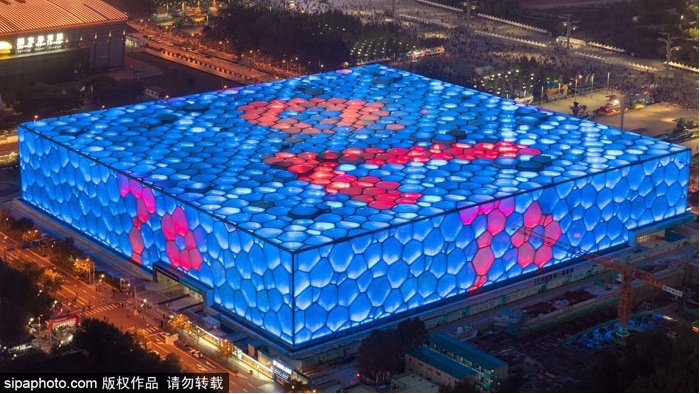
The crystal clear national swimming center "Water Cube" is one of the landmarks of the Beijing Olympic Games. It is located in the south of the Beijing Olympic Park and the west of the central axis. It is the main swimming pool of the 29th Olympic Games in 2008. People are deeply impressed by the dreamlike picture of square "bubble" effect picture. This blue "water molecule" building and the National Stadium are located on both sides of the north end of Beijing's central axis. One is round and the other is square, reflecting the architectural concept of "Circular Sky, Quadrate Earth" in China. Compared with the design of the National Stadium "Bird's Nest", "Water Cube" embodies more feminine softness, one masculine and one feminine, which forms a sharp contrast and has a strong visual impact, forming a complete image of Beijing, a famous historical and cultural city.
The "Water Cube" is the only swimming venue with a capacity of more than 10000 people. The amount pledged reached RMB 960 million. Among these donations, the biggest one is the 200 million Hong Kong dollars donated by Mr. Huo Yingdong. During the 2008 Olympic Games, the national swimming center undertakes swimming, diving, synchronized swimming, water polo and other competitions, which can accommodate 17000 seats, including 6000 permanent seats. After the competition, the National Swimming Center was built into a water park integrating swimming, fitness and leisure.
Tel: 84370112
3.The National Indoor Stadium

The National Indoor Stadium is one of the three main venues of Beijing 2008 Olympic Games. It looks like an unfolding folding fan, adjacent to the "Bird's Nest" (National Stadium) and "Water Cube" (National Swimming Center), forming a unique architectural community. It is located in the south of the Beijing Olympic Park, east of the central axis square, south of the National Swimming Center ("Water Cube"), west of the digital Beijing Building, north of the National Convention Center. With a total floor area of 6.87 hectares, a total construction area of 81000 square meters, and a volume of 510000 cubic meters, the museum can accommodate up to 20000 people. It is the largest indoor comprehensive gymnasium in China.
The main venue is 30000 square meters, and the size of the warm-up hall connected with the main venue is the same as that of the main venue. The third floor of the gymnasium is the floor of VIP boxes, with 19 boxes in large, medium and small sizes ranging from dozens to hundreds of square meters, and supporting facilities like restaurants and elevators for special use.
The National Indoor Stadium has a metal roof, and the exterior wall is decorated with glass curtain wall. The design is inspired by Chinese folding fans. The surrounding steel structure and large area of glass curtain wall are mixed together, just like an open Chinese folding fan, showing the connotation of Chinese culture. Together with “Water Cube” and National Conventional Center, it makes the urban landscape in the Olympic Park reach a harmonious unity. The National Indoor Stadium is composed of the main building, the warm-up hall and the outdoor environment. It is the perfect combination of the traditional Chinese architecture and the contemporary construction style. A platform of 300 square meters is specially set on the grandstand on the north side of the venue as a spectator stand for the disabled, which can accommodate 250 to 300 people in wheelchairs. The grandstand has an elevator to the ground, and the disabled audience can take the elevator directly. As the first-class sports facilities in Beijing, the national indoor stadium will become a civic activity center integrating sports competitions, culture and entertainment and providing multi-functional services.
Tel: 84370576
4.China National Convention Center
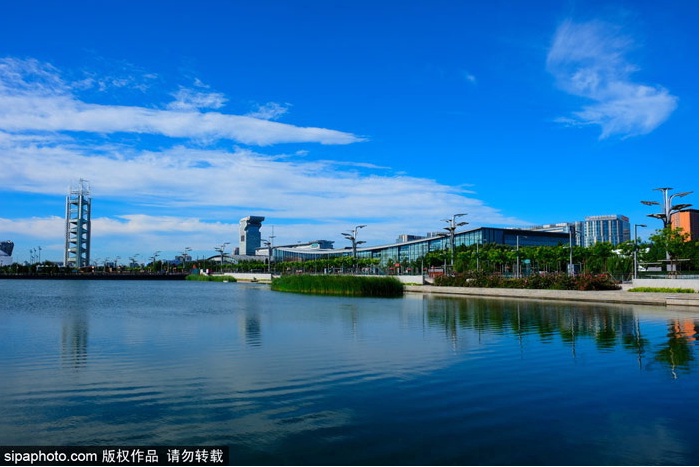
The beautiful China National Convention Center is a temporary venue for the news center, the international broadcasting center, fencing competitions, modern pentathlon fencing and air pistol competitions during the Olympic Games in 2008. Located in the Olympic Park, it is on the north side of the “bird's nest” and “water cube”. The design of its main part integrates the design elements of traditional Chinese architecture. From the front, the roof of the building adopts a structure with four corners slightly upturned, which looks like the traditional eaves of China, and the bottom part forms an upward arc, which looks like the traditional arch bridge of China, echoing other buildings in the Olympic Park and reflecting the communication and exchange of people and information and the connotation of stepping into the future.
The total construction area of China National Convention Center is 530000 square meters, and the main construction area of the conference center is 270000 square meters, with complete functions and advanced facilities. There are nearly 100 conference rooms of different sizes, equipped with the most advanced audio-visual equipment for conferences, which can meet the multi-functional service needs of meetings, banquets, performances, new product launches and company activities of different scales from 20 to 6000 people. Among them, the largest conference room is 6400 square meters, which can accommodate 6000 people, and the grand banquet hall is 4860 square meters, which can accommodate 3500 people. The exhibition hall covers an area of 24000 square meters, with a net height of 10 meters. With only three columns, it can be flexibly divided into four independent exhibition halls to meet the needs of various conferences, exhibitions, incentive tourism and large-scale activities. The building area of supporting facilities is about 260000 square meters, including 443 guest rooms in the luxury four-star National Conference Center Hotel, which is connected with the National Conference Center by a corridor and only 3 minutes’ walk. As China's largest, newest, geographically superior and well-equipped conference center, the National Convention Center has become a world-class conference center that can meet the needs of large-scale conferences, exhibitions, various public activities and hotel rooms.
Tel: 84373300
5.Olympic Forest Park
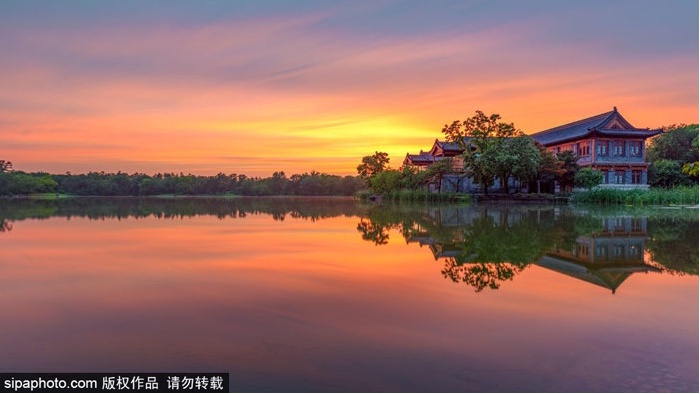
The Olympic Forest Park is located at the north end of the central axis, in the north area of the Olympic Park, which is known as the "back garden" of the 29th Olympic Games. After the Olympic Games, it has become a natural scenic area for Beijing citizens. The Olympic Forest Park is the closest forest park to Beijing citizens. It covers an area of 680 hectares, which is larger than the sum area of the Summer Palace and the Yuanmingyuan. It is the size of 10 Beihai parks. The area of the south park is 380 hectares. The "Zhu Shan Zhu Hu" is the main mountain of the forest park, which is on the same axis with the Jingshan scenic area, echoing from north to south. Yang mountain is made of 3.98 million cubic meters of earth, which echoes the Yan Mountains in the northwest. It not only conforms to the tradition of Chinese garden construction, but also integrates with the surrounding environment.
"Olympic Lake" and landscape river form the "dragon shaped" water system in the Olympic Forest Park, with 122 hectares of water surface, more than 1/2 of Kunming Lake. In Chinese mythology and traditional culture, dragon is the most noble and sacred totem, always combined with water. Here, the dragon's body winds through the forest park, opening its mouth to the Qinghe River, while its tail encircles the National Stadium. It is integrated with the surrounding environment to form a benign ecological water cycle system. Among the "dragon shaped" water system, there are not only area close to visitors, but also wetland landscapes, which forms a natural and harmonious ecological landscape. "Dragon shaped" water system and Yang mountain conform to the Chinese traditional concept “there is a water in the front; there are mountains in the back and on the left and right”, the best location in “Fengshui” concept.
In the Olympic Forest Park, from time to time, we can see some ancient monuments, some of which are clearly visible, while some of which are blurred due to a long period of weathering. Every ancient monument here is a story. These ancient monuments stand in the park, one by one, like upright guards, guarding the land. The owner of these ancient monuments is either the brave general galloping on the battlefield, or the pillar of the country governing the country. Among them is the general, Tu Hai, who once fought in wars in Qing Dynasty and made outstanding achievements. There is also Zhao Hui who made outstanding achievements in the war pacifing the rebellion in Junggar, Xinjiang. There is also Hai Wang, a minister entrusted by Emperor Yongzheng on his deathbed. There are also Hai Wang, Er Tai, Zhang Tingyu and other six people were appointed to assist Emperor Qianlong in governing the country, and Wei Wu, the grandfather of Emperor Yongzheng of the Qing Dynasty. Tu Hai, Zhao Hui, Hai Wang, Wei Wu, they chose the family cemetery here because of its unique terrain. Today, they are still safe and quiet in the Olympic Forest Park, guarding the peace and prosperity of this land.
Tel: 64529060
Transportation:
South Gate: take Metro line 8 and get off at South Gate of Forest Park Station;
West Gate: take No. 510 or 81 bus and get off at Ao Lin Chun Yuan Station;
East Gate: take BRT line 3 and get off at Yangshan Bridge South Station.
6.Olympic Park Sunken Garden
Trees, lakes and fountains make up a beautiful picture of China. The open external space, unique walls and other architectures inject new language into the tradition. Wall of drums, Zhongpan tower, panpipe, piano curtain and green bamboo bench constitute a beautiful plot of oriental music The sunken garden of the Olympic Park has seven courtyards with Chinese characteristics, which perfectly represent the "open Forbidden City". Located 9 meters underground in the central area of the Olympic Park, the sunken garden is flanked by the entrances and exits of the large shopping center and the subway. The 700-meter-long space is connected by seven courtyards. From the south to the north, they are Yu Dao Gong Men, Gu Mu Hua Ting, Li Yue Chong Men, Crossing Yingzhou, He Yuan Xie Qu and Shui Yin Chang Tian. The seven courtyards, with Chinese elements as highlights, fully demonstrate the Chinese history and modern cultural heritage.
Courtyard 1: Yu Dao Gong Men
Yu Dao Gong Men is the south entrance space of the sunken garden. The 18-meter-wide steps guide people to enter the sunken garden. The entrance is designed with a palace gate, and the top structure expresses the image of traditional architecture. From the steps to the palace gate, there is a square with 36 square meters. This is a multi-functional open-air space, which is a collection and distribution space and also a performance stage. It takes the palace gate as the background, and is equipped with high-definition LED screens on both sides, which can play a huge picture of 18 meters wide and 5 meters high. It has the function of an open-air theater. The southeast side of the square is a leisure space, composed of arrays of trees, flowing water, and fountain. The 50-meter-long and 6-meter-high wall of flowing water forms the effect of rising ebbing tides.
Courtyard 2: Gu Mu Hua Ting
It is a typical quadrangle, which maintains the basic spatial pattern of the traditional quadrangle, changes the traditional closed space into the open external space, adds some traditional Chinese elements, and injects the space with a new expression language.
Courtyard 3: Li Yue Chong Men
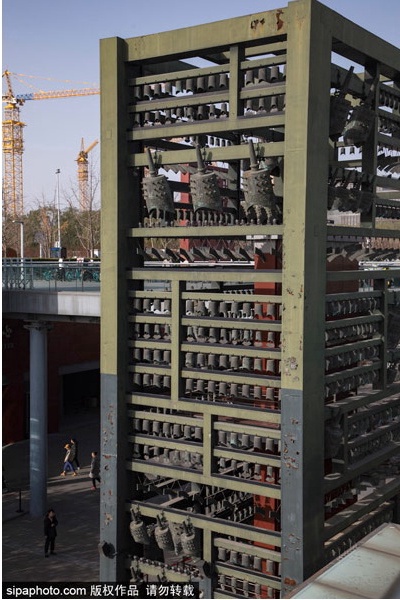
Its east side is the underground commercial area; the west side is the subway and some commercial areas; the north and south ends are connected with the front and rear yards, which is a transitional space. There are red walls and hundreds of "rattling drums" supported by red steel structures. The drum surface can be knocked, and the lamp is hidden in the drum. During the day they are drums; at night they are lamps. The combination of the drum lamps forms a red gate, bringing a festive atmosphere for the Olympic Games. There is also a row of "Copper Xiaos", which will ring when the wind blows. It also has lights to guide passers-by. There is also set up with a bell tower. The steel frame is covered with Zhoongpan bells, which swing with the wind and have a pleasant voice. In addition, bamboos are planted here and benches are placed to provide a very comfortable resting area for tourists to enjoy the traditional oriental music.
Courtyard 4 and 5: Crossing Yingzhou
Courtyard 4 and 5 and the pedestrian tunnel of Datun Road are the connecting spaces between the north and south gardens. Because this is the entrance and exit of the subway and the traffic hub of Datun Road, a large number of people often gather here, so the theme of the space is "crossing". This crossing traffic space combines with green leisure space, showing the yearning for the fairyland of Yingzhou.
Courtyard 6: He Yuan Xie Qu--Beijing Quadrangle Dwellings
It is a typical type of residential dwelling in northern China, spreading all over villages and cities. The original intention of including Beijing quadrangle dwellings is to integrate historical and cultural factors into our architectural creation.
Courtyard 7: Shui Yin Chang Tian
Courtyard 7 is located in the northernmost part of the sunken garden. The overall spatial planning reflects the prosperity scene, which means the country is peaceful and the people are safe.
Tel: 6442836
7."North Ding Niangniang" temple
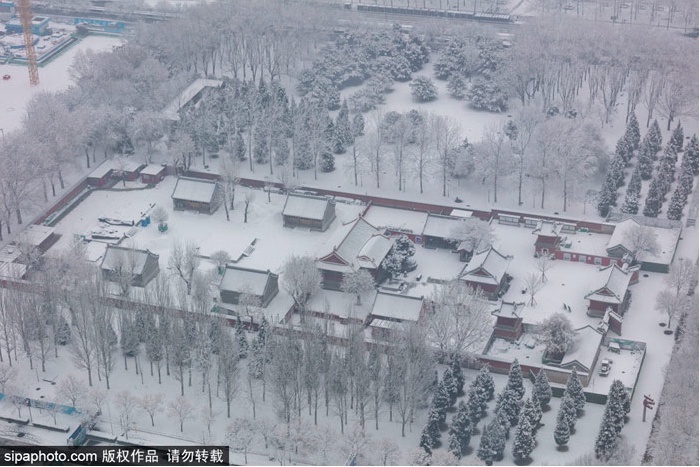
"North Ding Niangniang" temple is the royal temple of Ming Dynasty. It was originally dedicated to "Bixia Yuanjun", one of the five famous "Five Dings, eight Temples" in Beijing. It is located in the north end of the north extension line of Beijing central axis, and is the landmark in the north of Beijing. According to historical records, there are many temples in Beijing in Ming and Qing Dynasties. Most of the temples in the city are places for sacrifice, and most of the temples outside the city are places for spring outing and assembly. The "Five Dings" of old Beijing represents the five directions of the city, with different functions. The “Middle Ding” is mainly for celebration activities; the “South Ding” is famous for horse racing; the “West Ding” is the place where the Empress Dowager prays for blessings; the “North Ding” and the “East Ding” are mainly for assembly functions, and are the places where people exchanged materials. Today, only the "North Ding Niangniang" temple can be restored among the five Niangniang temples (“Five Dings”).
Originally, there were four gates and five halls. There is a big stage for performing operas in front of the temple. In the early years, there were drama programs in every celebration. However, it was gradually forgotten in the period of the Republic of China, and some ancient buildings were seriously damaged in the “Cultural Revolution”. Now there are only three ancient buildings left.
There is a story behind the construction and presence of a splendid landscape of the Olympic venues and the ancient temple. According to the original design, the “Bird's Nest” is in the East and the National Swimming Center is in the West. But according to this design, the National Swimming Center is located in the present location of the temple. In order to ensure the protection of the ancient buildings, the designers modified the original design and moved the location of the National Swimming Center to the north by 100 meters. "North Ding Niangniang" temple is managed by Chaoyang District Culture Committee of Beijing Municipality.
8.Olympic Park Tennis Center
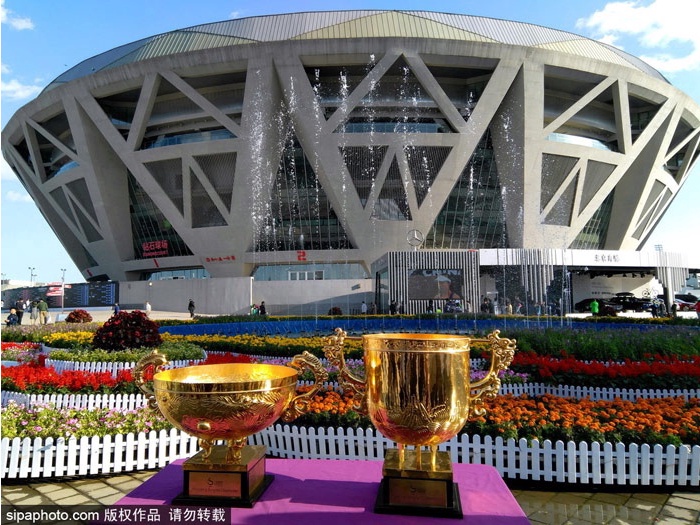
The Olympic Park Tennis Center is located in the Beijing Olympic Park, adjacent to the North Fifth Ring Road in the north, West Beichen Road in the east, Baimiaocun Road in the west and archery field in the south. The whole project covers an area of 16.68 hectares, with a total construction area of 26514 square meters and a total of 10 competition venues. Among them, as the final venue, the center venue can accommodate 10000 spectators, No.1 venue can accommodate 4000 spectators; No.2 venue can accommodate 2000 spectators. No. 2 platform has seven preliminary venues, each of which can accommodate 200 spectators, with a total seating capacity of 17400. There are also six practice venues.
The center court is also the place to hold the final of the tennis match. In the aspect of "people's Olympics", from the aspects of environment, ventilation, temperature, water supply and fire safety, bath comfort, etc., the designers pay full attention to the humanized design, making the athletes, coaches, referees and the general audience feel convenient and comfortable as far as possible, and fully reflecting the care for all kinds of people, especially the disabled. The center field and the rest of the field form three rectangular platforms that rise gradually and extend to the forest. The preliminary field is arranged on the outside, and the center field and No.1 field are arranged on the highest platform. The audience activity area is located above the platform, and the VIP, athletes, and media staff are arranged below the platform, so as to skillfully adapt to the competition function and realize the separation of the audience and participants.
Tel: 64881300
9.Olympic Park Underground Circular Traffic Tunnel
The Olympic Park has picturesque scenery on the ground and unique and scientific designs underground. The Olympic Park underground circular traffic tunnel is 9.9 km long, including 4.5 km long main road, which is the longest urban tunnel in Asia. The direction of the circular tunnel is the same as South 1st Road, East Hubian Road, North 1st Road and West Jinguan Road in the central area of the Olympic Park. The east and west sections are 13m away from the ground, and the south and north sections are 7.8m away from the ground. The main body of the passage is 4498.92m long, and the exit connecting with the ground is 3719.06m long, and the whole underground project is 9931.78m long. This underpass is not only a record in Asia, but also a rare one in major cities around the world.
The passage is 12.25m wide and has 3 lanes in total. When driving in the tunnel, you can feel very spacious. What's special about the tunnel is that it only allows counter clockwise one-way driving, and the speed limit is 30 kilometers per hour. It takes only seven minutes for the car to complete a lap in the tunnel. 25 entrances and exits connect the surrounding traffic network. There is an entrance and exit every 200 or 300 meters in the underpass, reaching 25 entrances and exits in total. The dense entrances and exits are connected with 10 roads around the central area of the Olympic Park. Among them, there are 6 entrances and 7 exits connected with the ground road, 6 entrances and 6 exits connected with Datun road tunnel and Chengfu road tunnel.
At present, the traffic flow of these surface roads is quite large, and the traffic is slow during peak hours. But underground, it can pass quickly to transfer to the city roads. The underpass is also connected with the underground garage in the surrounding buildings. There are also 34 interfaces reserved for those buildings that have not yet started construction.
In addition, the underpass not only is a traffic road, but also has complete auxiliary facilities to make it safe and comfortable, including 5 independent personnel escape exits, 1 fire pump station, 1 monitoring center, air exhauster room and air supply room.
10.Olympic Tower
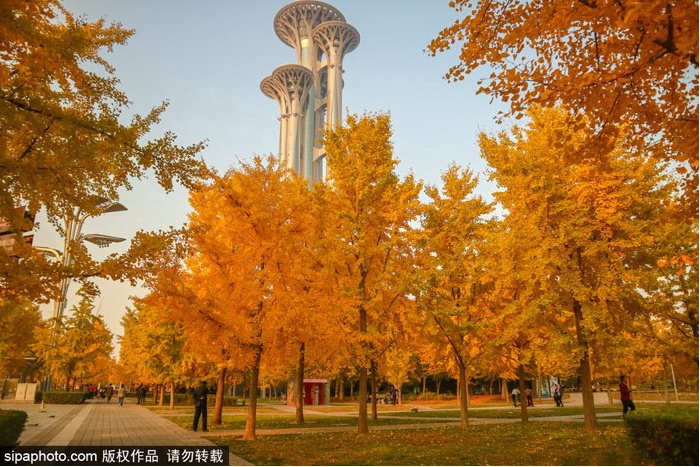
When you look up in the park, you can see the Olympic Tower. The Beijing Olympic Tower takes the "tree of life" as the design concept, which means the earth cracks and the tree of life emerges from the earth's crust, grows, and gradually extends around the top of the tower, like a bunch of flowers, like fireworks, like fountains. Five towers with different heights have unique shapes. LED is used for night scene lighting. When night falls, the tower body can present different lighting scenes with different themes such as "bright ice and snow ", "Olympic rings" and "tree of life", becoming a new landscape highlight in Beijing at night.
11.Asia Investment Bank Headquarters
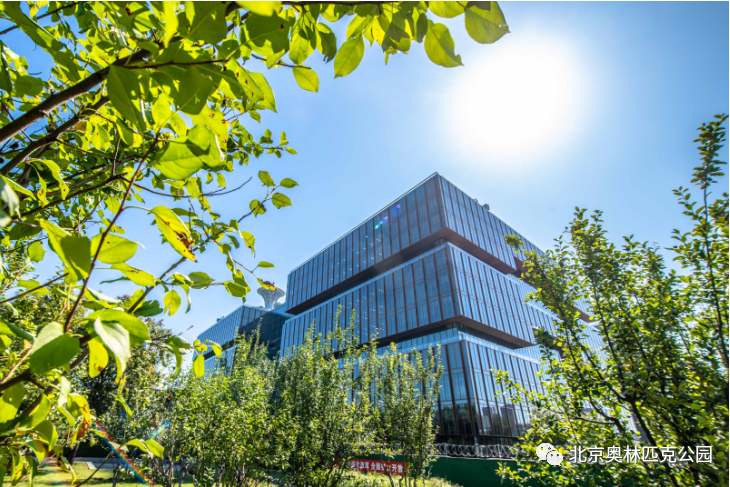
In September 2019, integrating Chinese elements and the world dream, the new landmark of Beijing –Asian financial building, also the location of the Asian Infrastructure Investment Bank, appeared silently in the Olympic Forest Park, with a total construction area of nearly 390000 square meters. There is the nearly 200 ton "Tai Mountain Stone" decorated inside the building. It is 15 meters wide and 3 meters high, gives the whole building a good moral.
Transportation: Metro line 8 Olympic Park Station, Olympic Sports Center Station, South Gate of Forest Park Station, Lincui Qiao Station, and line 15 Olympic Park Station.
III.Wangfujing Street
If you are still energetic, you are recommended to go to Wangfujing.
Wangfujing
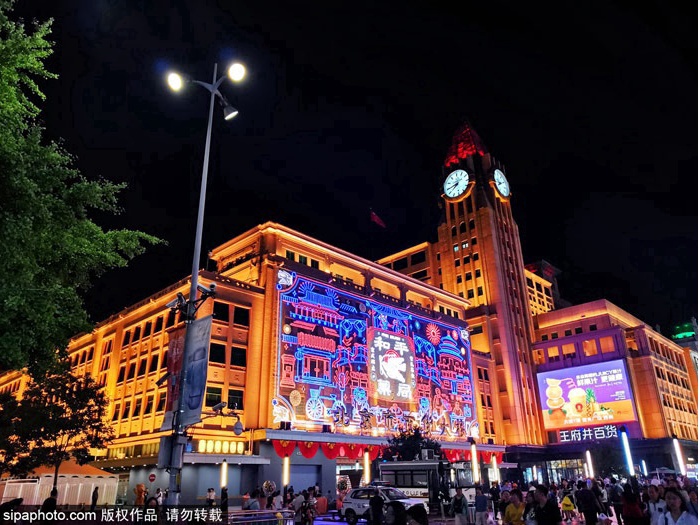
Wangfujing area is subordinate to Dongcheng District, Beijing, with a long history. After Zhu Di, the emperor, moved his capital to Beijing, ten palaces of princes successively were built here. Since Ming Dynasty, it was called "shiwangfu" or "shiwangfu" street. Because it was so close to the imperial palace that his relatives were living there, which was not a block for commons. Until the end of the Qing Dynasty, that is, during the period of Guangxu reign and Xuantong reign, it began to be prosperous. Many vendors and shops appeared on both sides of the street, and it began to become one of the prosperous commercial streets. After 1949, it gradually became a famous commercial area of Beijing built by the government.
Today, Wangfujing Street is 1818 meters long and divided into four sections from south to north: from Chang'an Street to Dongdan Santiao, 280 meters long; from Dongdan Santiao to Jinyu Hutong, 548 meters long; from Jinyu Hutong to Dengshikou street, 344 meters long; from Dengshikou street to Wusi Street, 646 meters long.
The daytime tour of Wangfujing is "through 700 years of prosperity". There are numersiou shops on the Wangfujing Street. The most famous one is the Beijing Department Store, and some shopping malls, such as APM, Oriental Xintiandi, Beijing Mall, Wangfu Central, Yintai IN88, Dong’an Market, and Wangfujing church, Beijing Lisheng sports mall, and Lego, NBA global flagship store, Adidas, Skechers and other collection shops. It is full of history, very fashionable, infinite vitality.
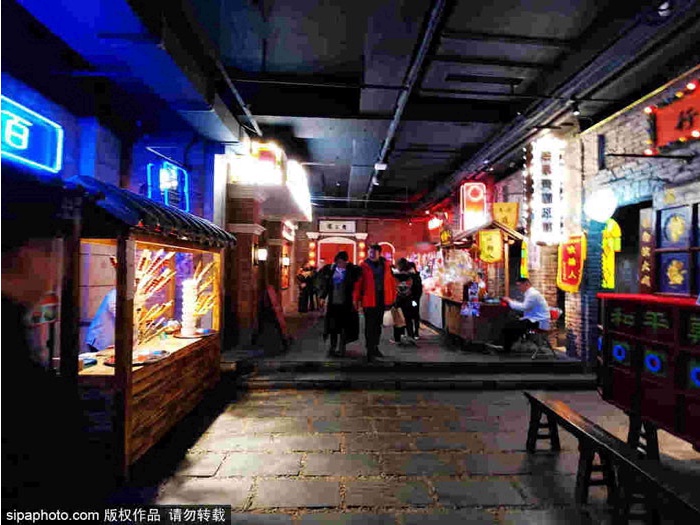
At night, Wangfujing becomes the “top one street of business stores” from grocery market. One of the key tourist areas of Wangfujing at night is No. 277 courtyard of Wangfujing, which used to be the former site of People's Daily. After the construction of Wangfujing snack street and style street, it is positioned as "golden street reception hall" after the renovation and upgrading.
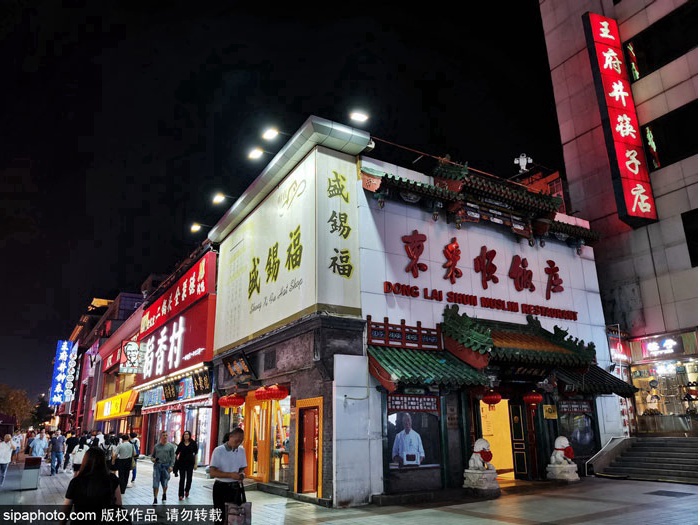
In addition, “two streets” are “Wangfujing East Street” and “Wangfujing West Street”. Wangfujing East Street is behind the APM, which is for tourists to rest. Wangfujing West Street is a children's art experience area built around Children's Theatre, providing night consumption projects suitable for children's characteristics.
Transportation: Wangfujing Station of Metro Line 1.



